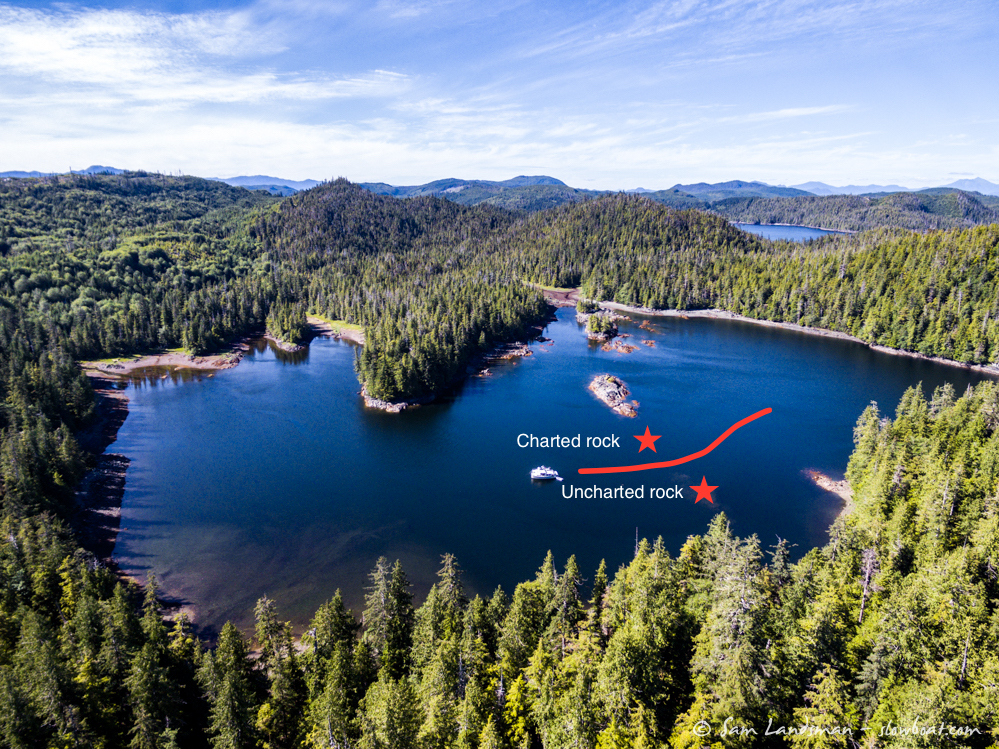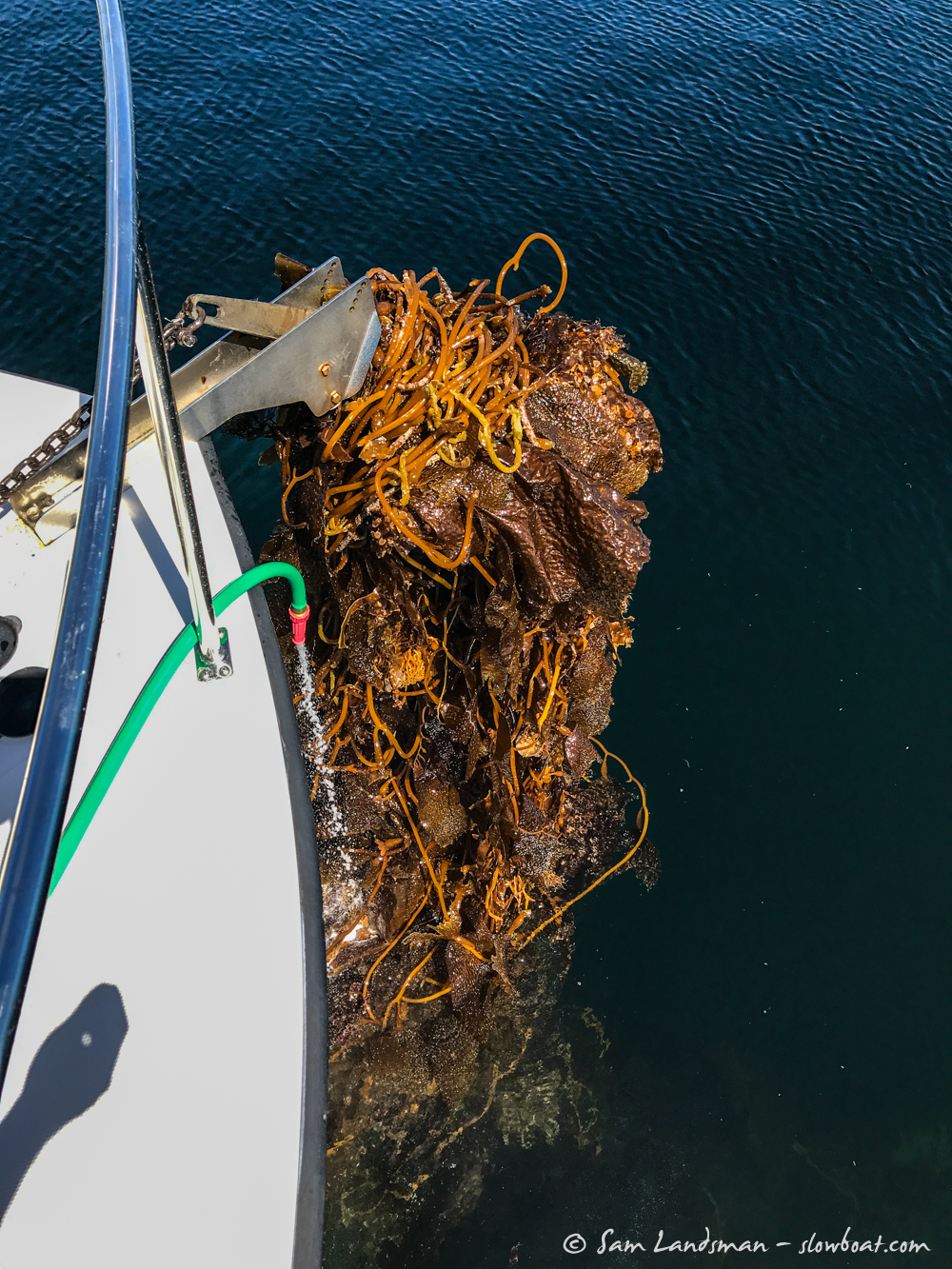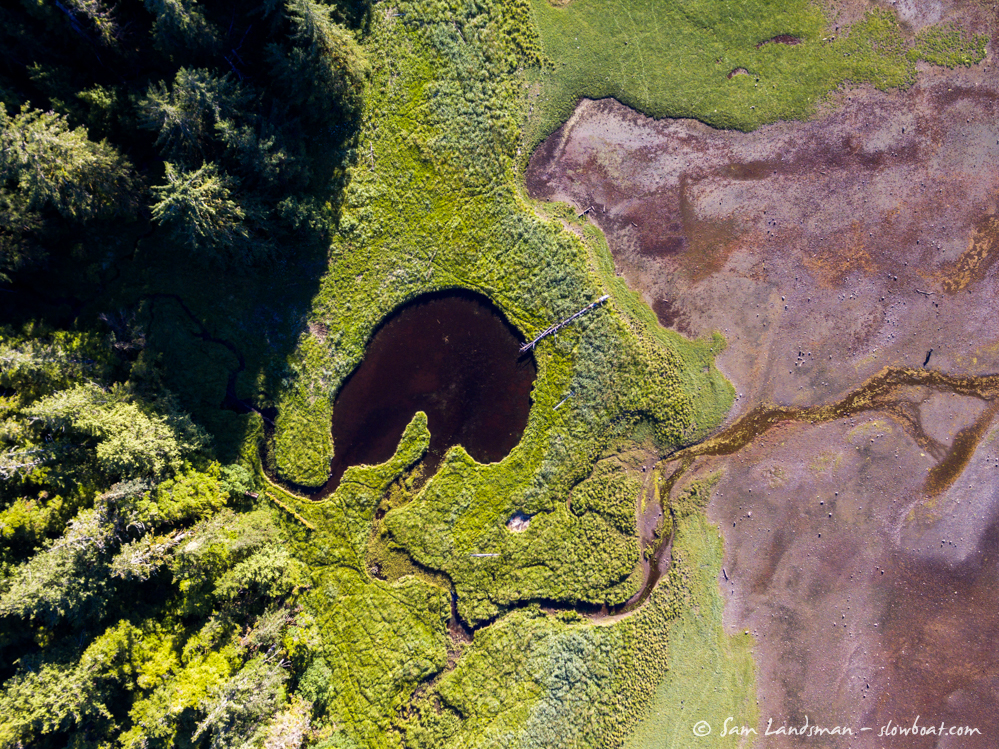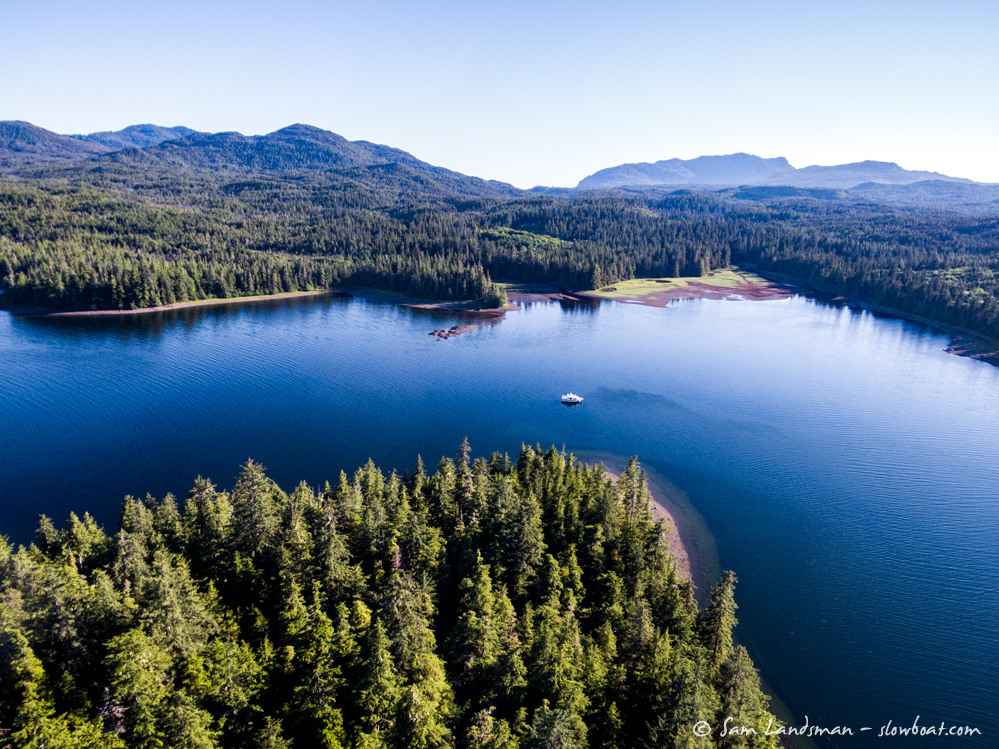From Hunter Bay we headed west to Nina Cove, on the east side of Long Island. The charts had been quite accurate in Hunter Bay and Kassa Inlet, but we found them seriously lacking in Nina Cove. Several rocks are accurately shown, but a big one isn’t. The picture below shows where the rocks are and the route we took. The safe channel between the rocks is narrow, probably about 50 feet wide.
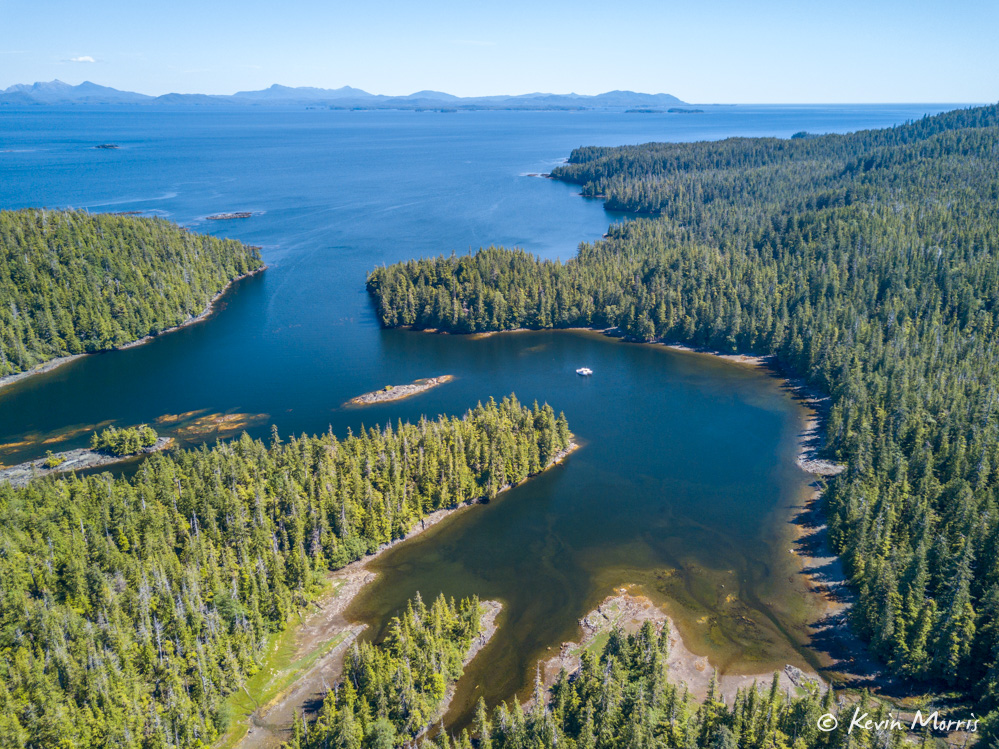
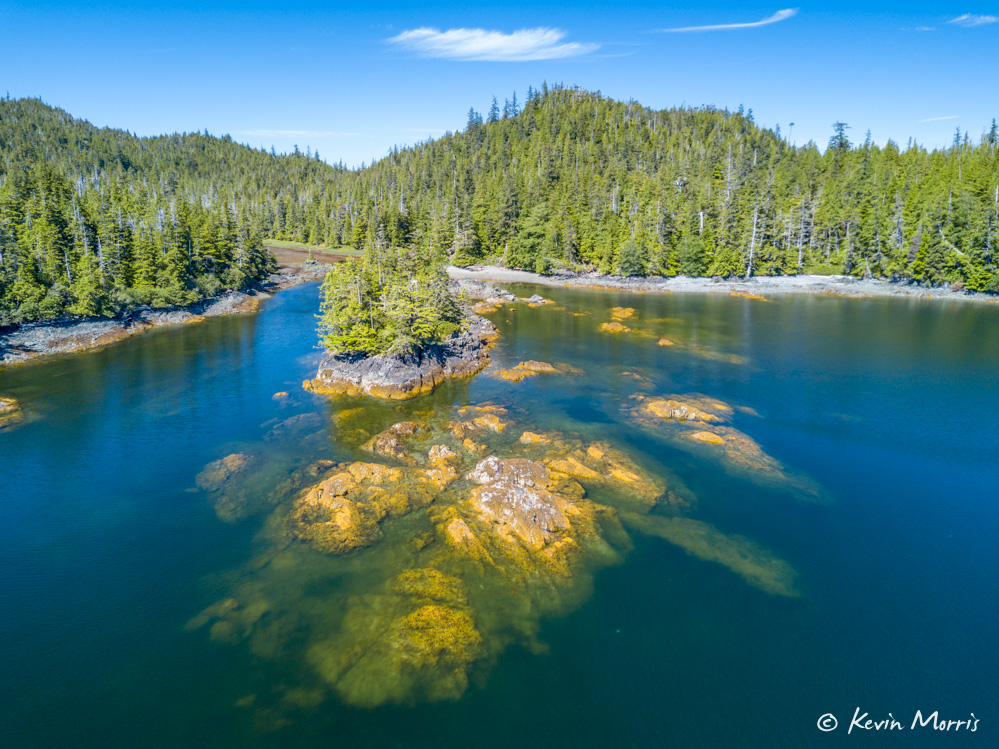
Long Island, including the shores of Nina Cove, has been extensively logged. The scars on the hillsides definitely take something away from the beauty of the anchorages (but dog owners and hikers appreciate the logging roads).
From Nina Cove we took the dinghies around to Coning Inlet, where rapids and a lagoon looked like good exploring. Sadly, getting through the rapids proved impossible. The tide was ebbing and on the low side (~5 feet). We had to fight against several knots of current and the channel that was deep enough to run a dinghy through was totally choked with kelp. Full throttle runs through the kelp resulted in a lot of noise and smoke but little forward progress before kelp stalled the engine. Reluctantly we turned back.
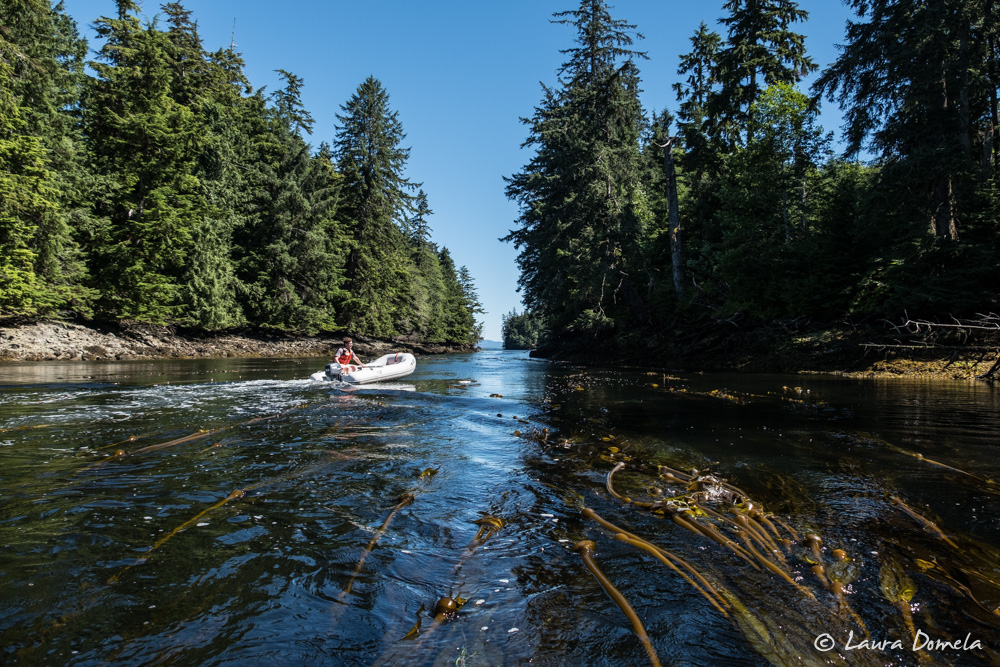
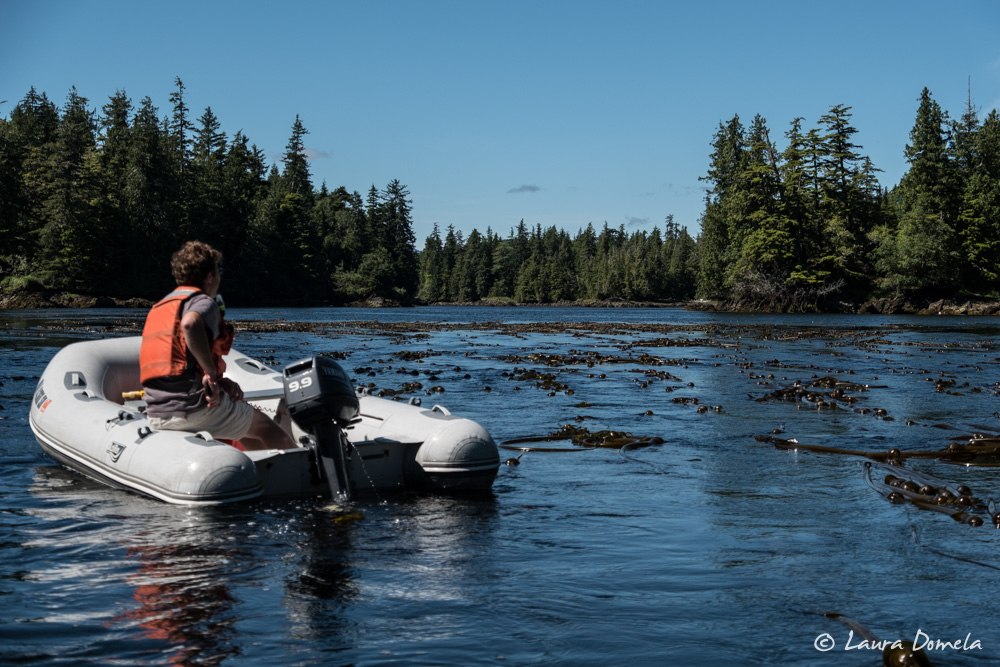
As we headed out of the rapids, we noticed a big piece of machinery on land and went ashore to check it out.
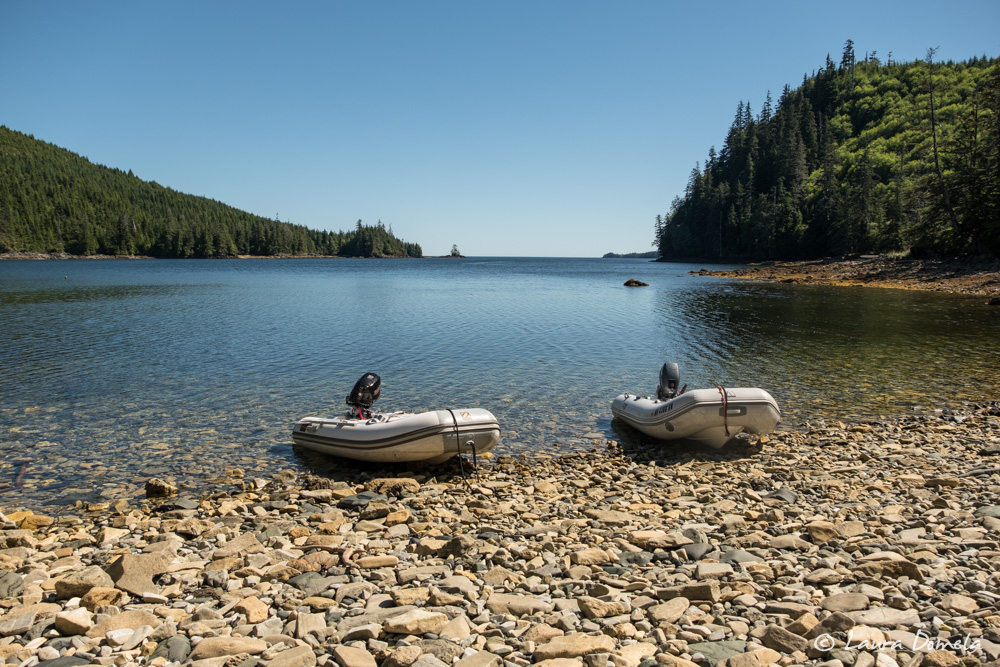
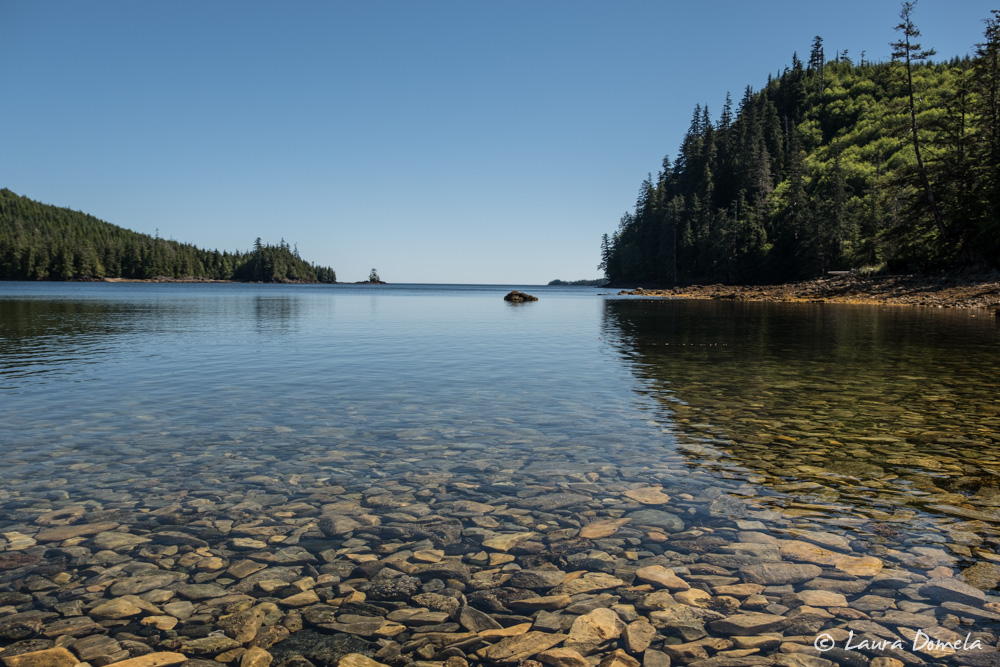
It’s called a Steam Donkey, and is a steam-powered winch used in logging.
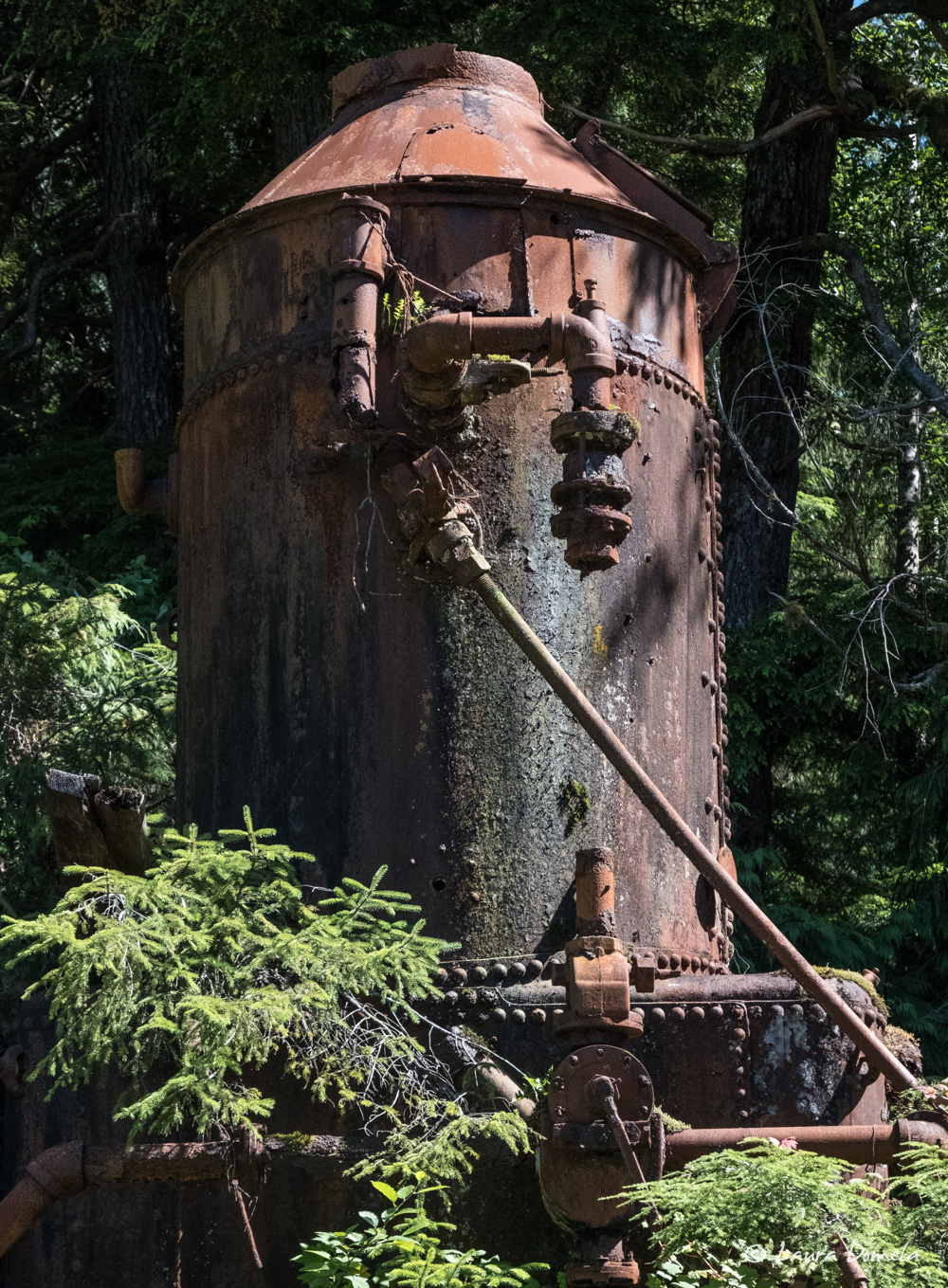
The next morning we left Nina Cove and headed south around the bottom of Long Island en route to American Bay on Dall Island. Kaigani Point, at the south end of Long Island, is just six miles north of the open waters of Dixon Entrance, but the swell (normally west-southwest in the summer) was barely noticeable!
We anchored in American Bay, on the east side of Dall Island, and explored the surrounding areas by dinghy.
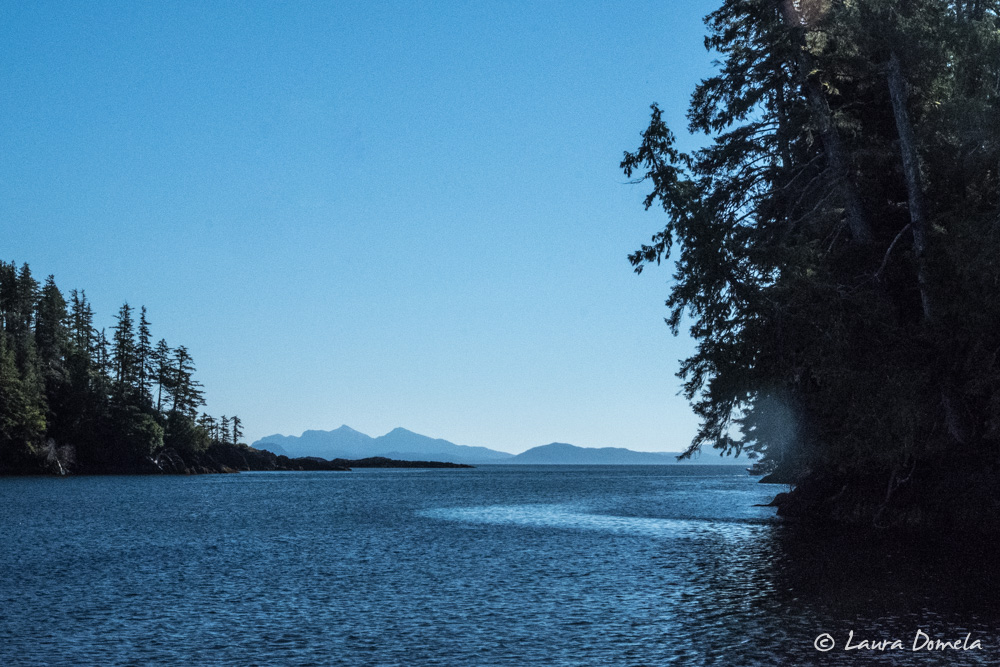
First we went across Kaigani Strait to visit the abandoned Haida village of Howkan. This area looks to be one of very few areas of Long Island that has not been logged, and we enjoyed wandering through beautiful old growth forest. We didn’t find any evidence of the village that once stood here, though.
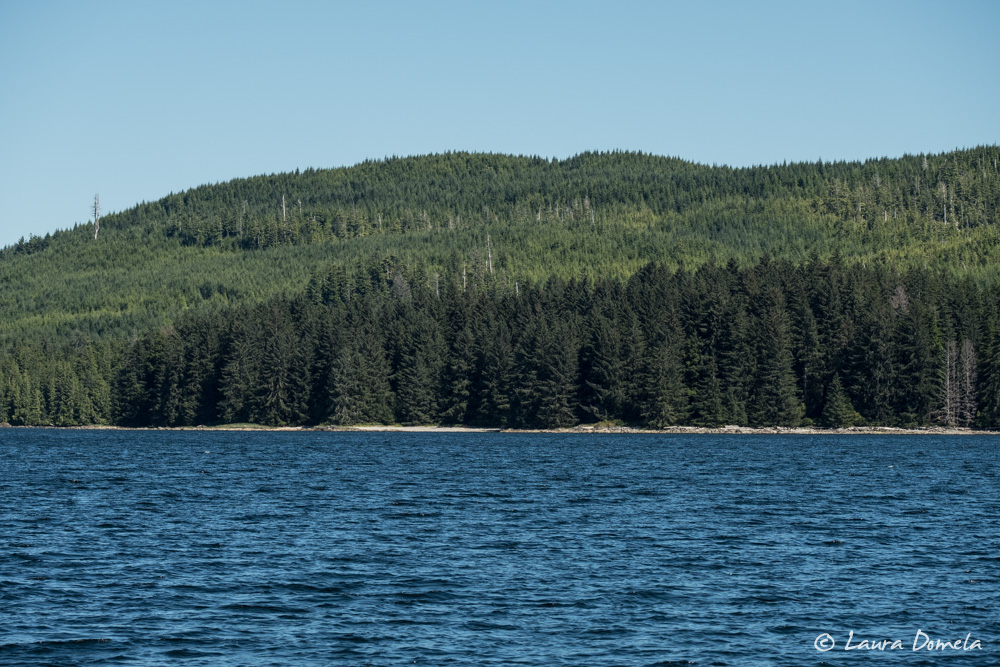
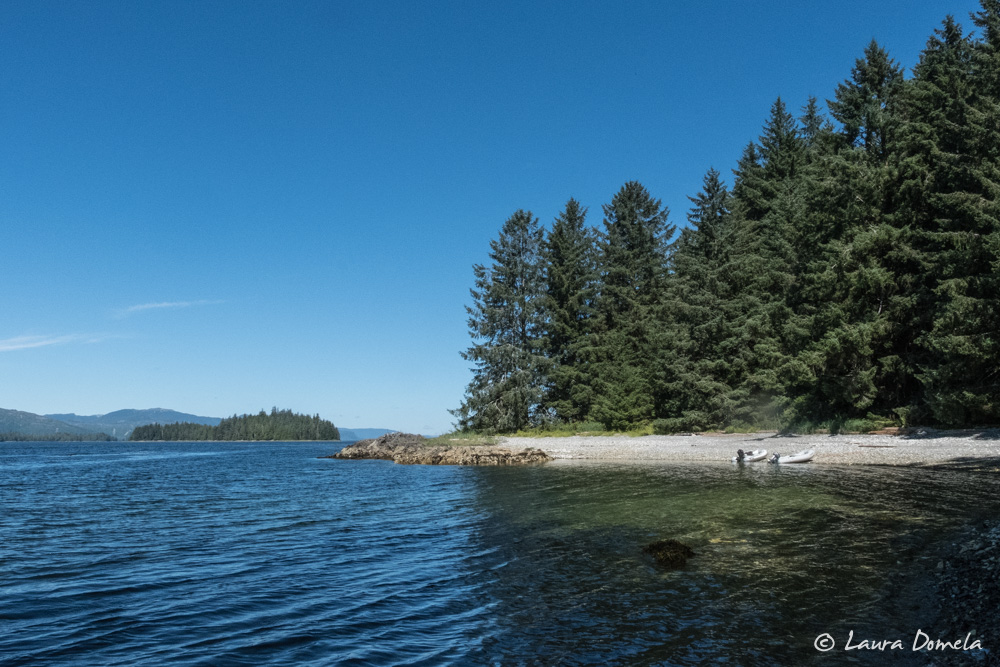
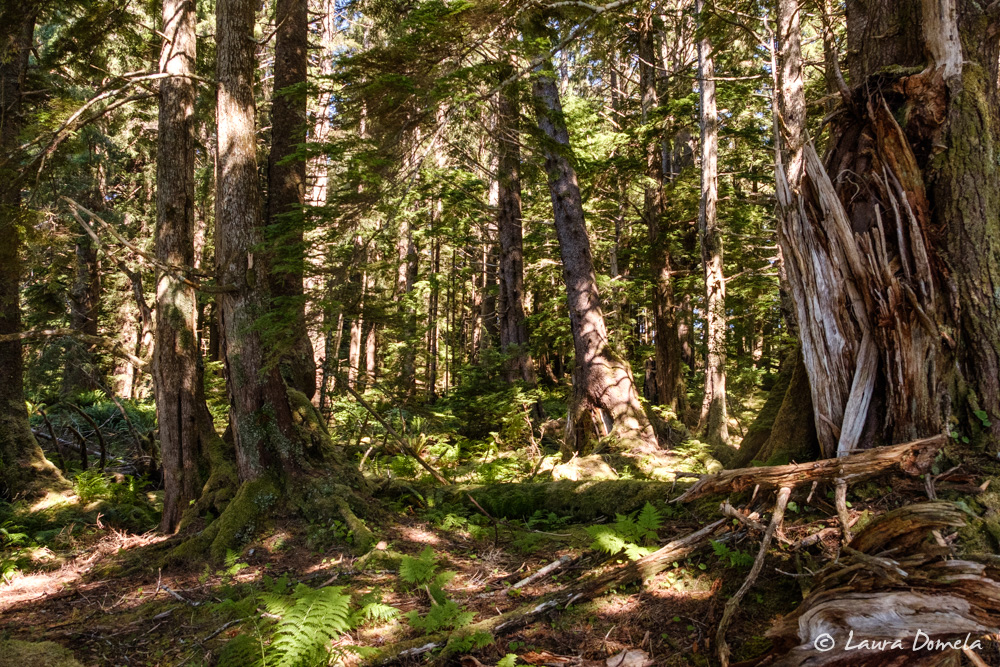
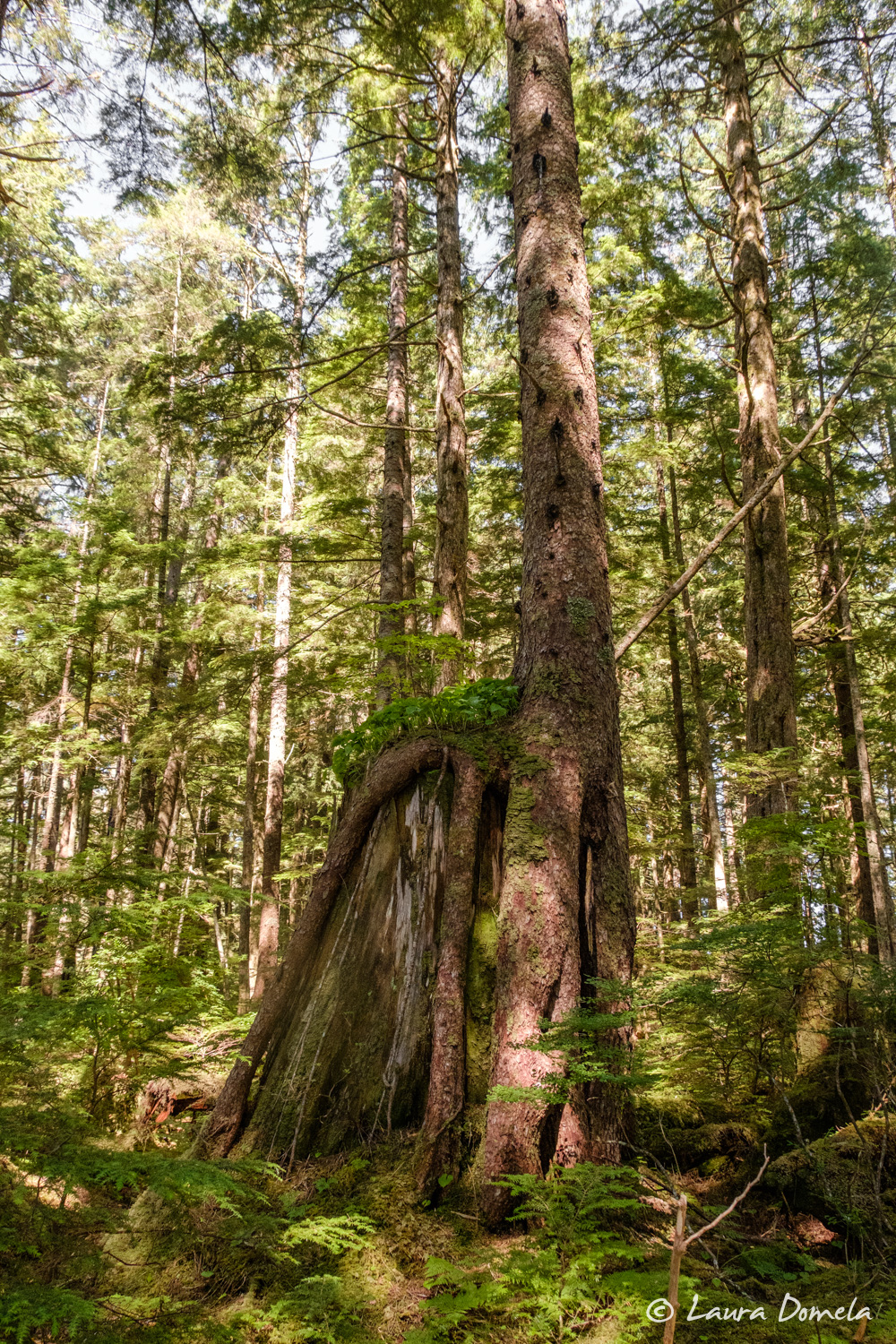
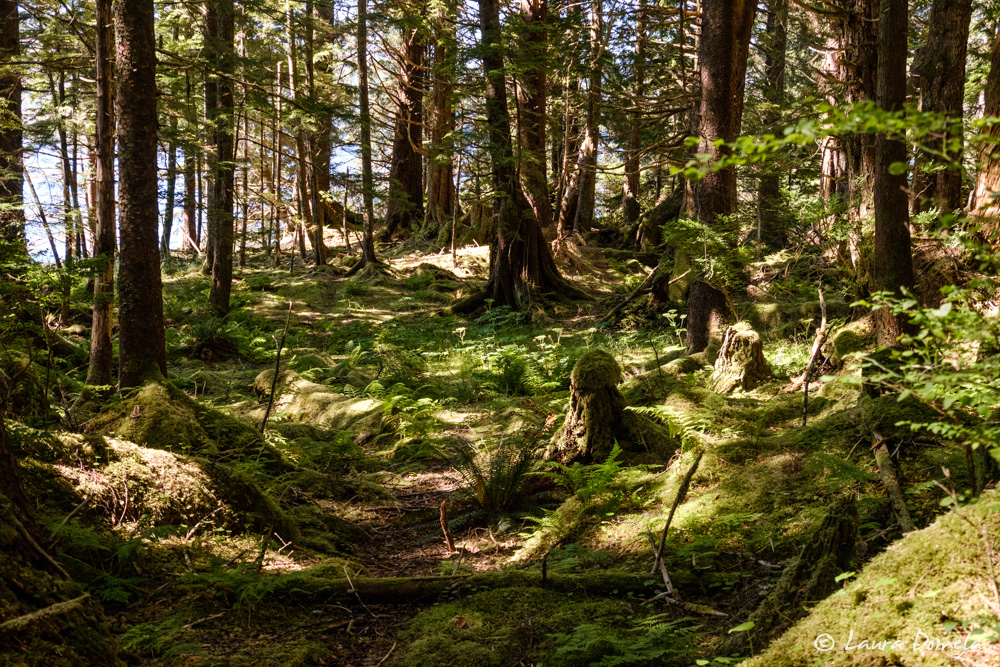
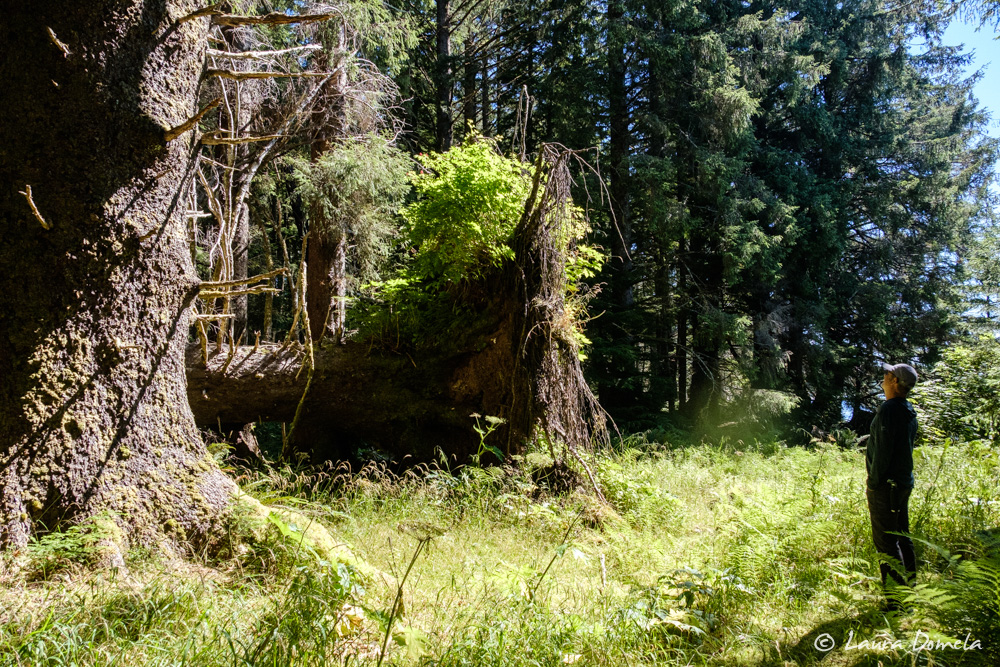
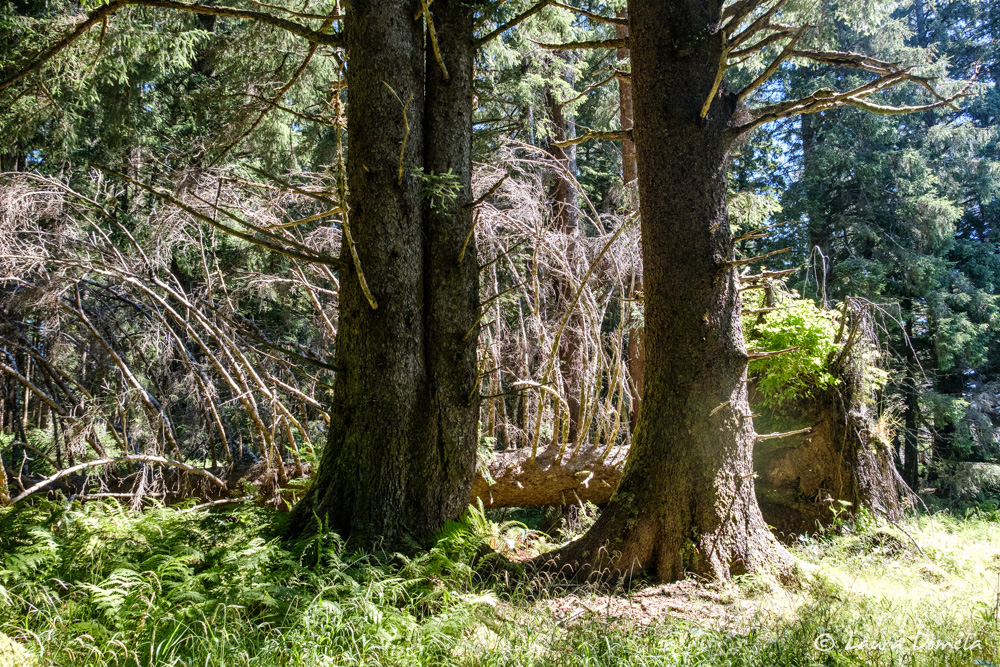
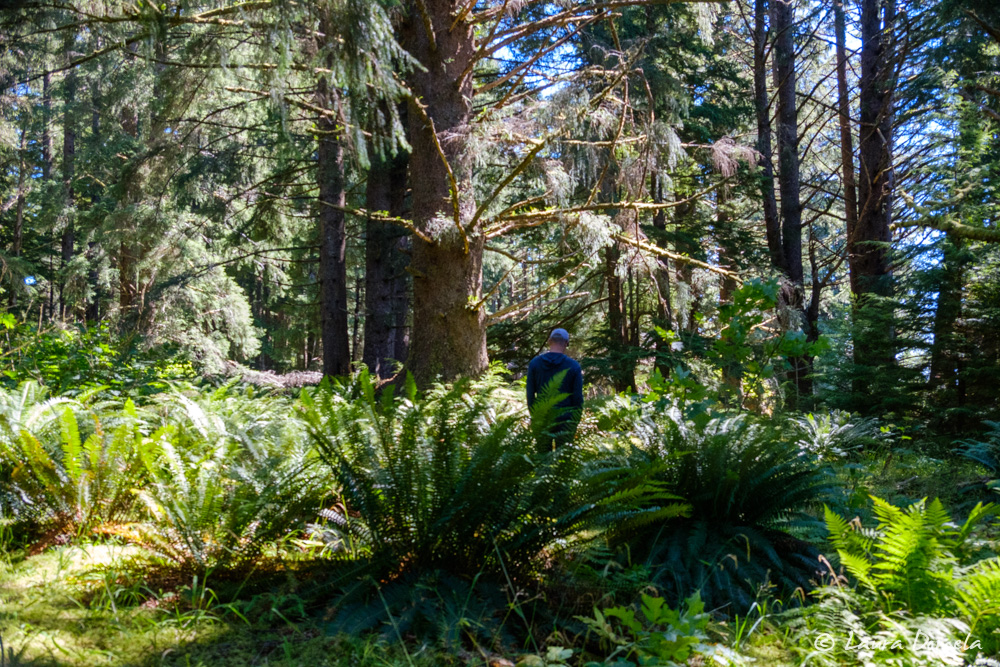
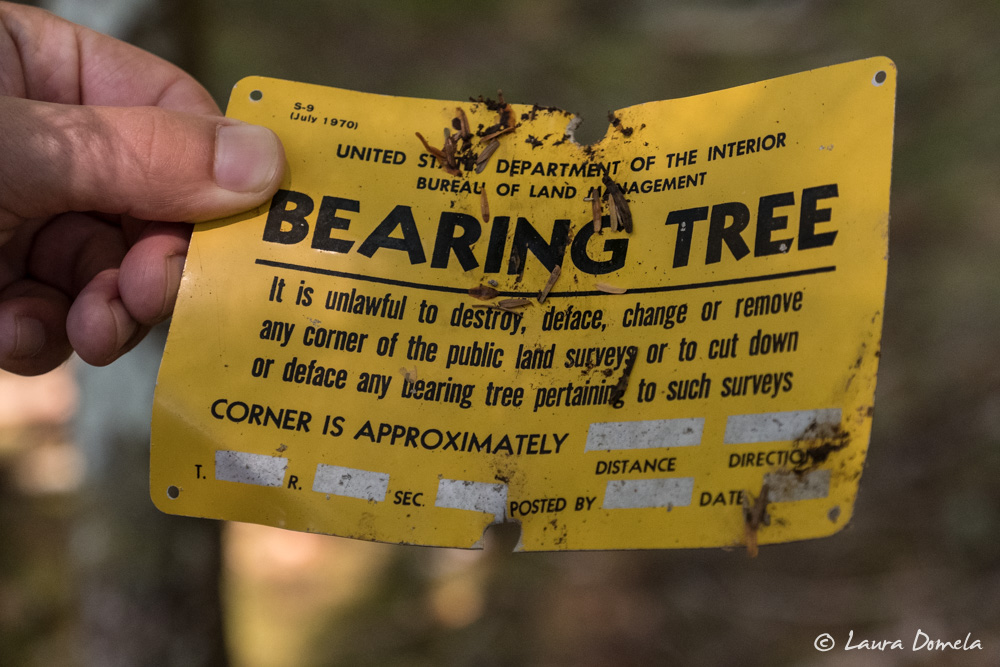
Howkan was originally a Tlingit village, but became a Haida village sometime in the early eighteenth century. The Kaigani Haida reportedly moved their winter residence to Howkan each year, and that in the late 1800s Howkan was thriving with a winter population near 300.
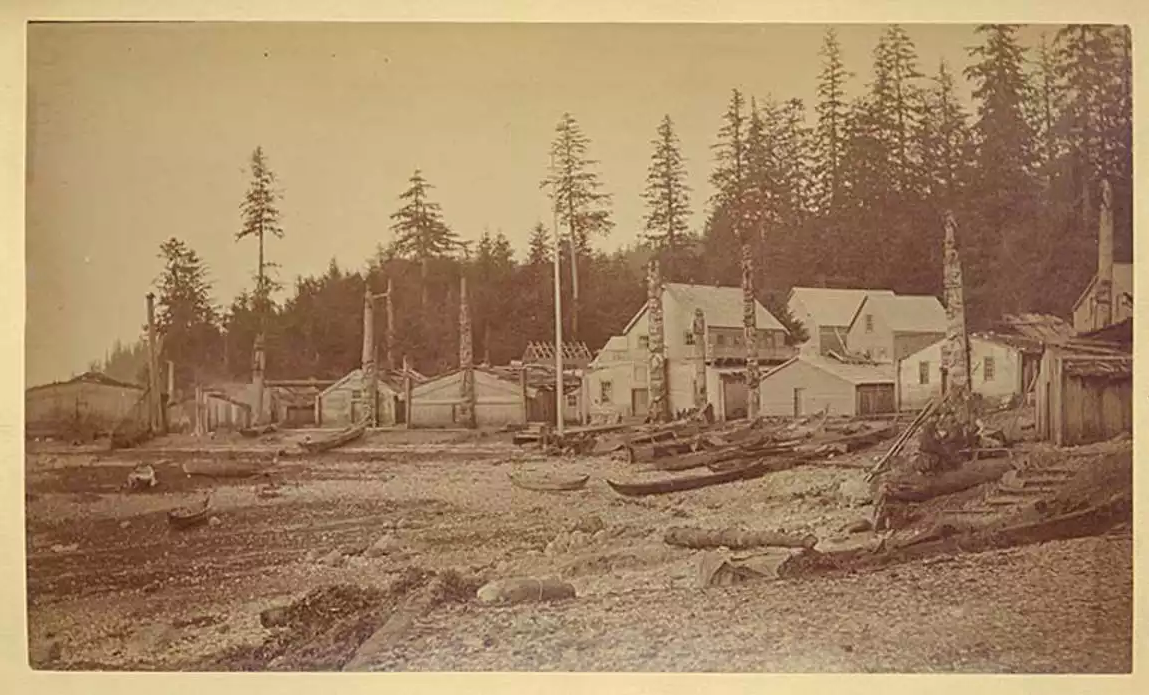
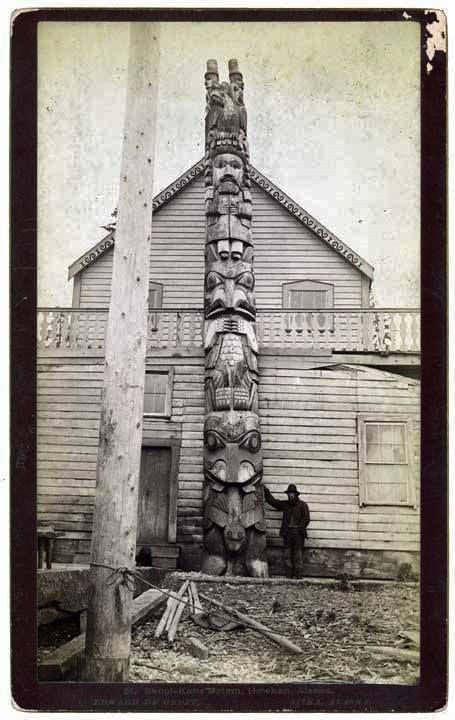
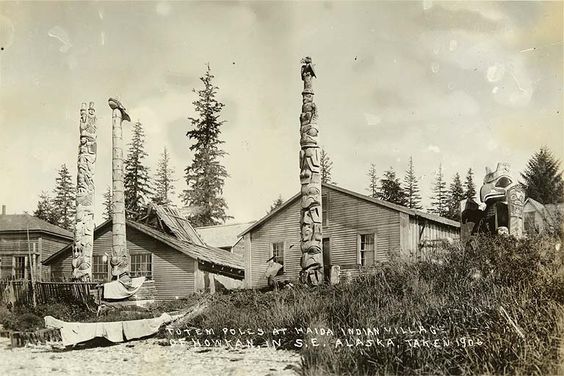
Two years ago when we were visiting Totem Bight State Park in Ketchikan, we photographed this eagle grave marker. The original stood in the old village of Howkan, and this one was copied (from memory) by John Wallace.
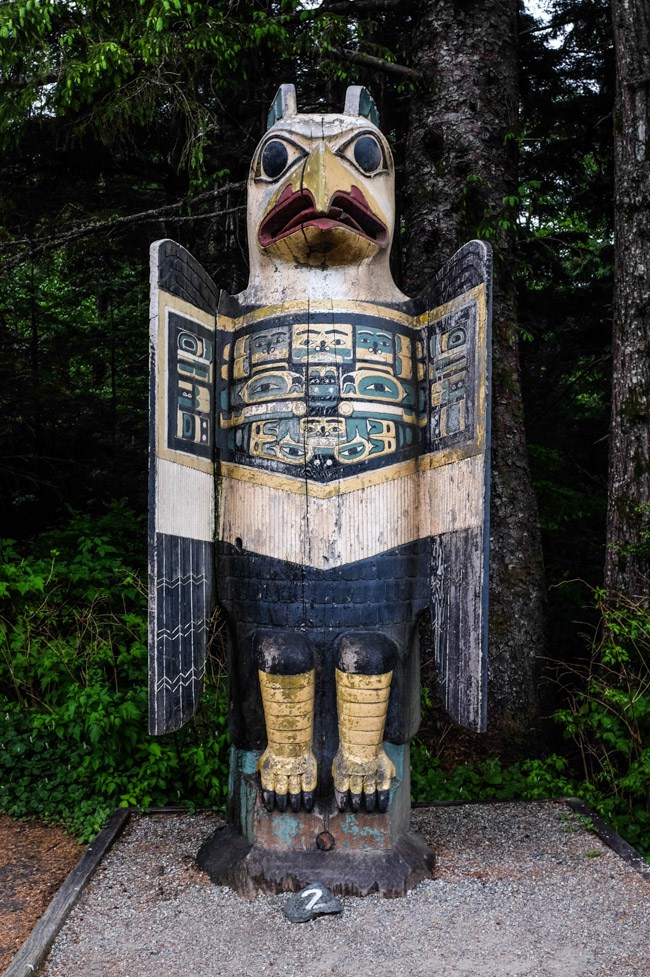
After visiting Howkan we headed to a nearby rocky island that the Evergreen Pacific guidebook said might have been used as a burial site. We found a couple survey markers but not much else.
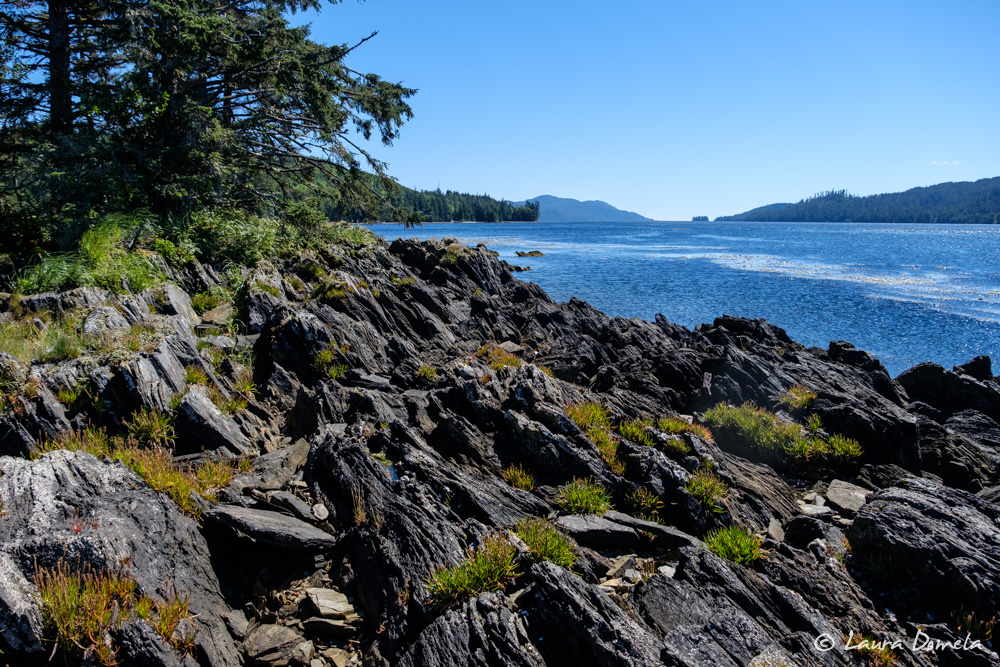
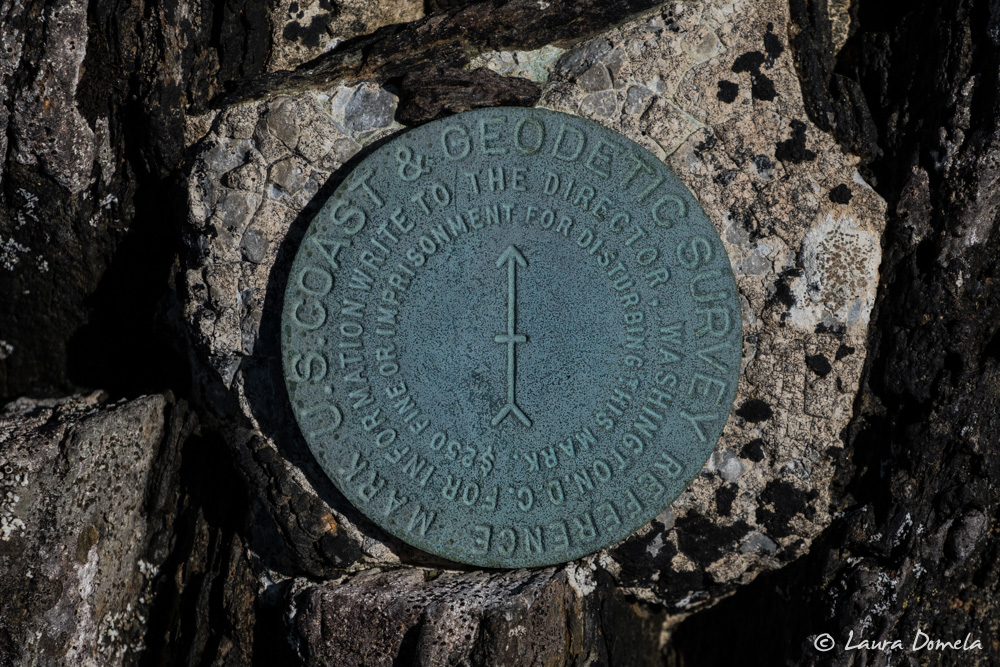
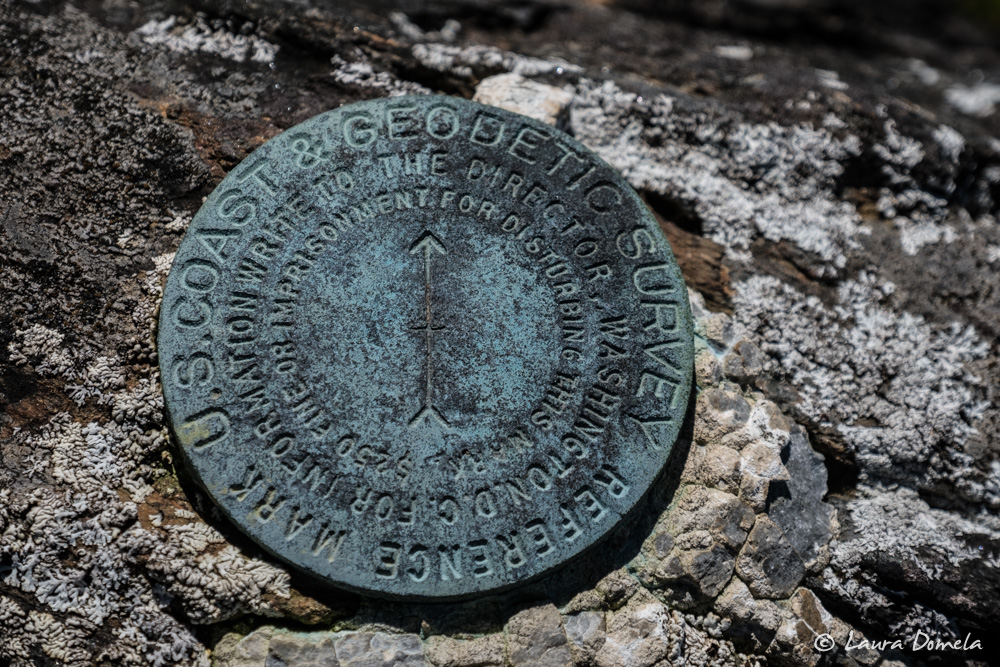
Next we went back across to Dall Island to explore Ham Cove, which is just north of American Bay. It’s filled with rocks, and given the questionable chart accuracy we didn’t want to take the big boats in. Recent clearcutting along the shore confirmed our choice to anchor in American Bay.
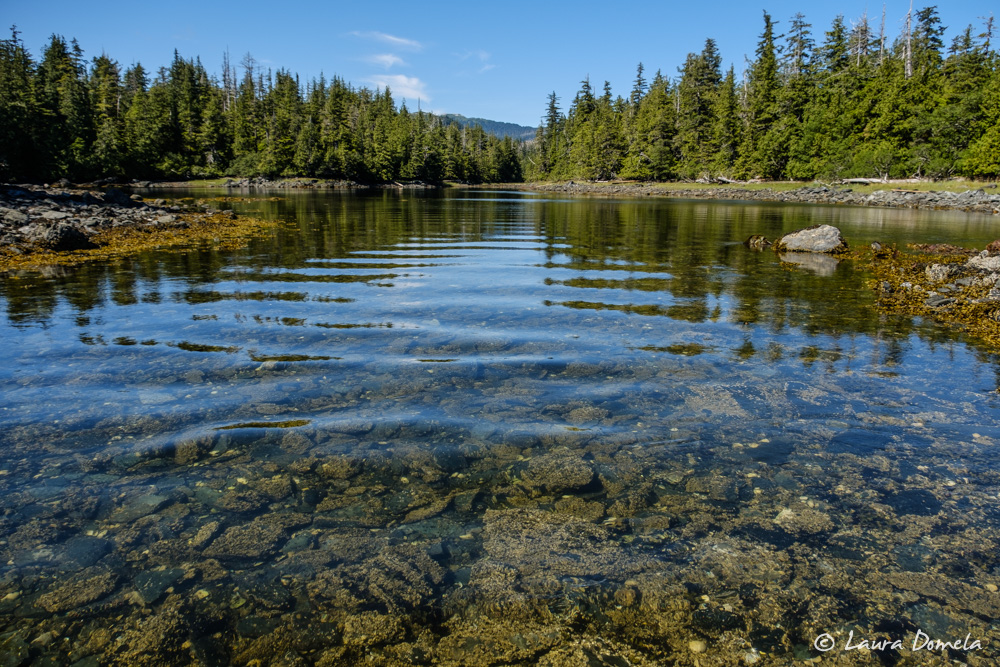
Before going back to Airship and Safe Harbour, we backtracked to get a closer look at a shipwreck we passed on the way in.
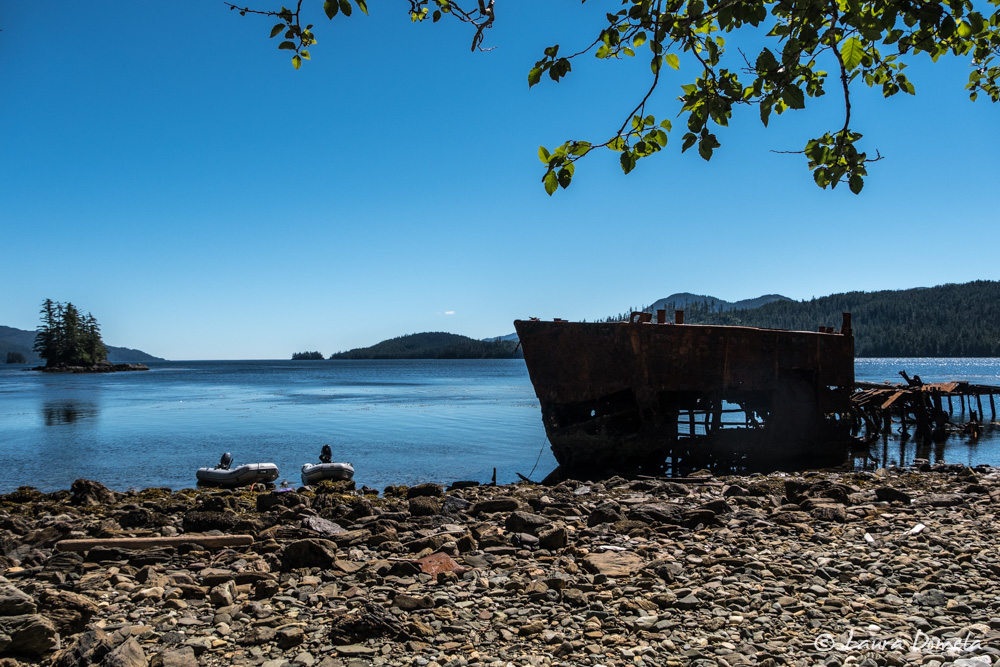
Kevin took the Mavic up for some aerial shots.
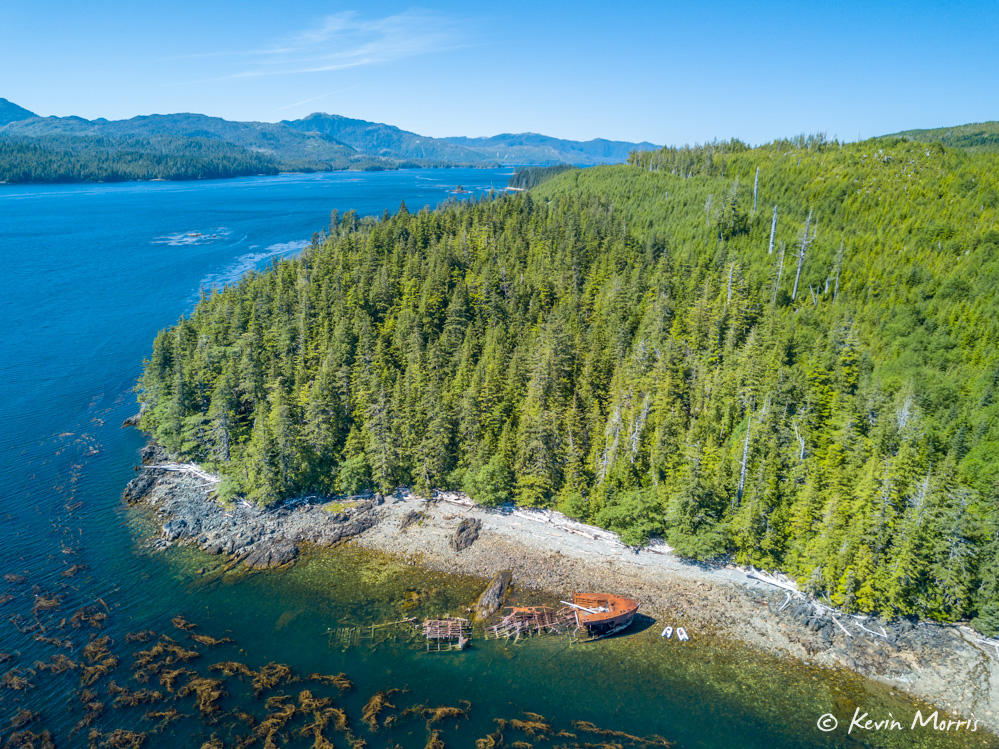
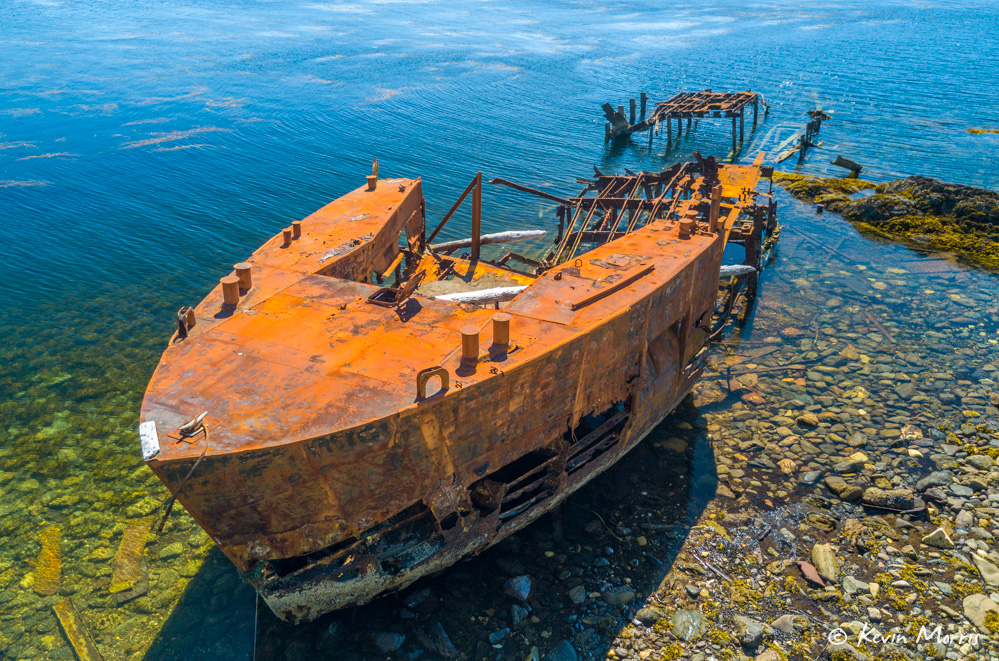
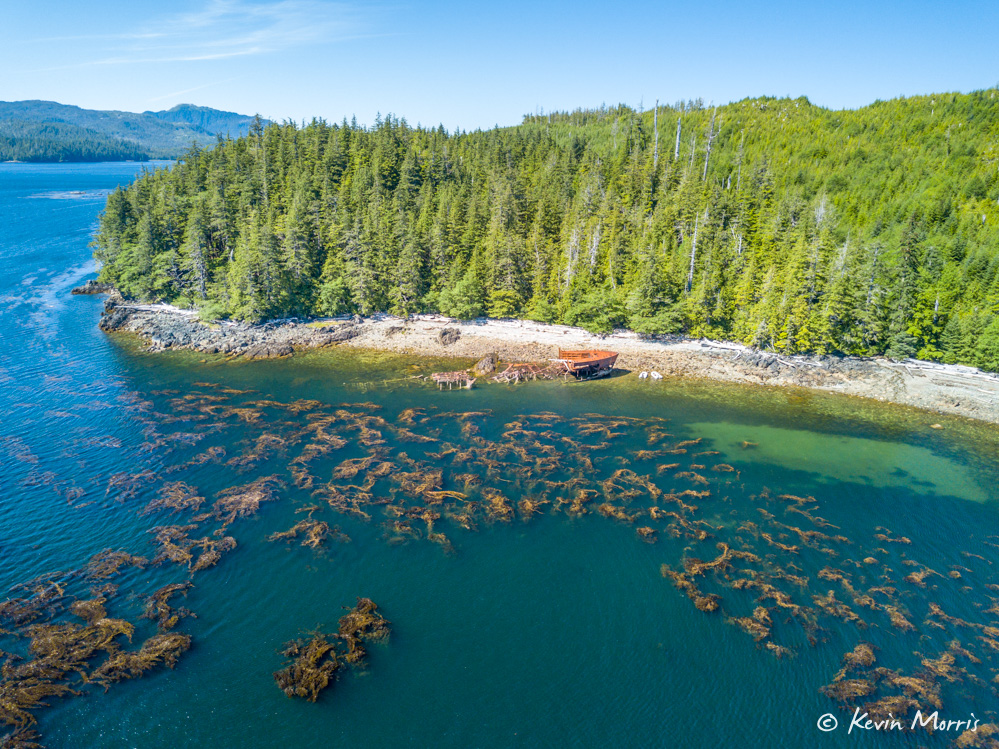
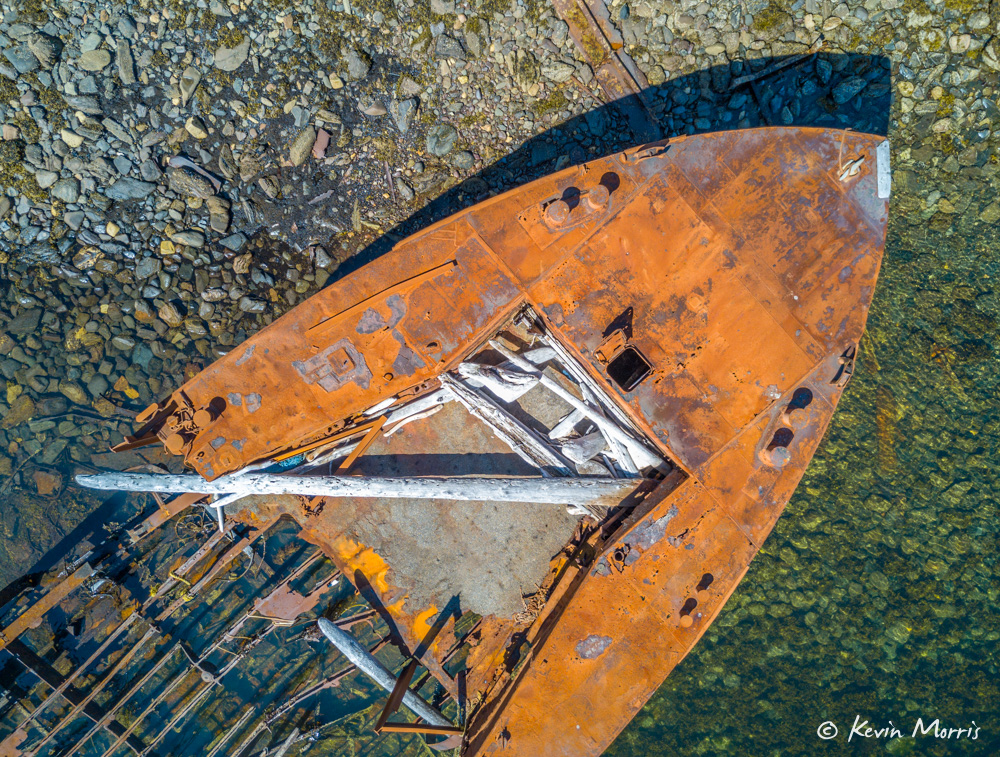
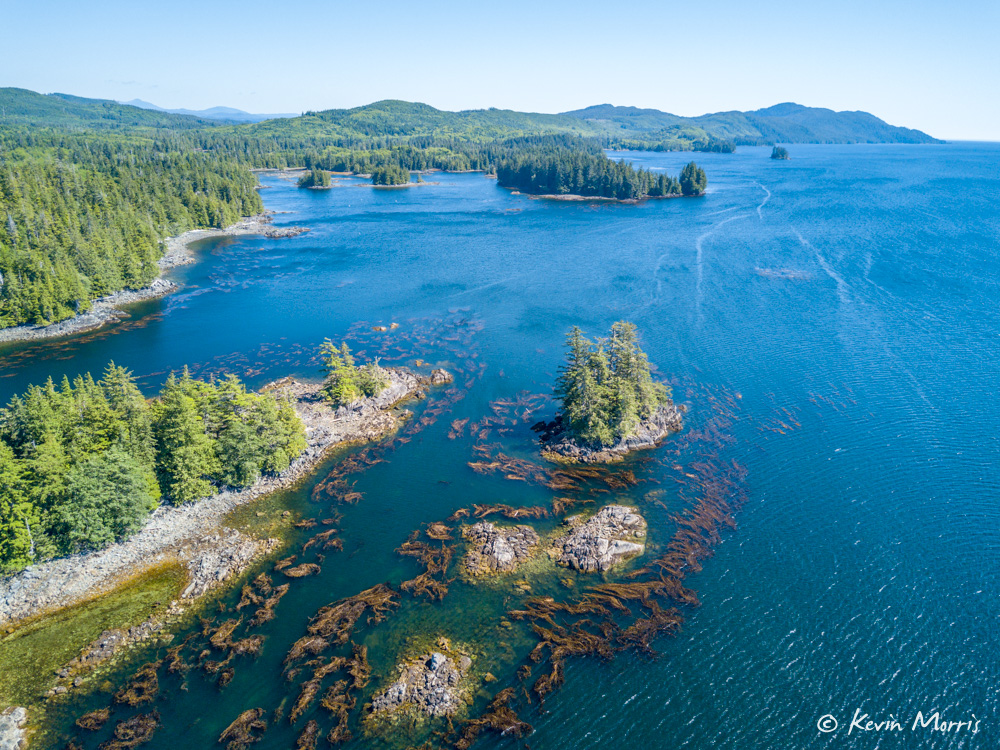
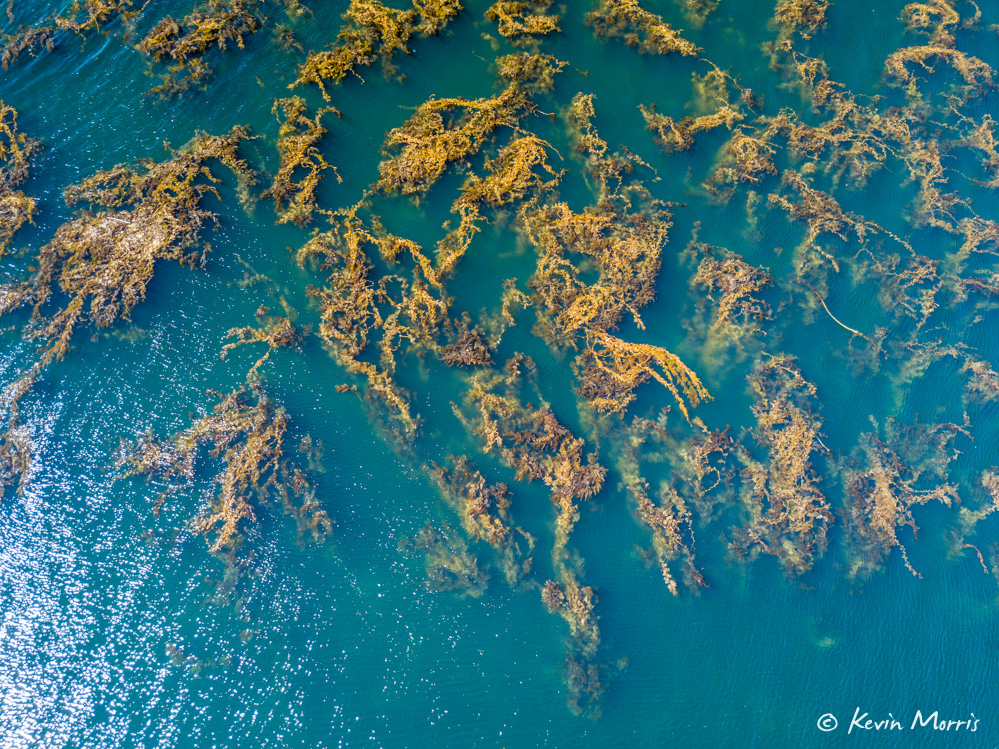
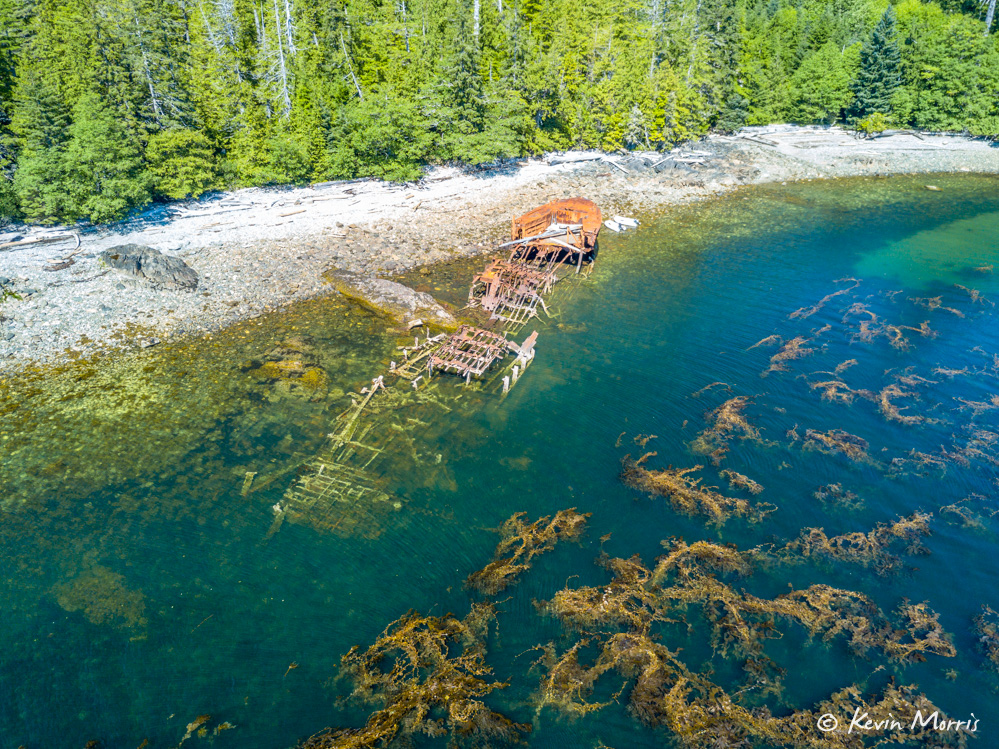
Back at our anchorage we grilled some salmon for dinner (with caesar salad and rice) and enjoyed the hot summer weather. The past few days we’ve been living in T-shirts and flip flops…a nice change from Grundens and Xtratufs!
We left American Bay around 11:30 a.m. to reach Tlevak Narrows near slack (currents run to 5 knots). Safe Harbour’s windlass pulled the anchor up slower than usual. As the anchor neared the surface, the reason became clear:
We anchored in Port Refugio on Suemez Island for the night, just a few miles east of Tlevak Narrows. Four black bears were on shore as we entered the anchorage. We put out a couple crab traps and then took a closer look at the bears.
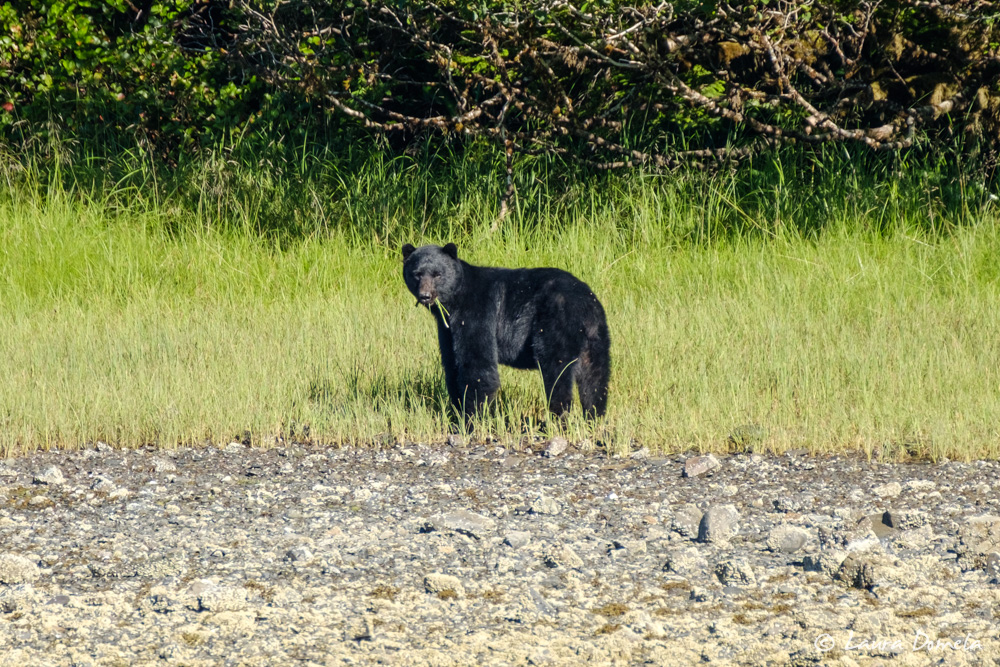
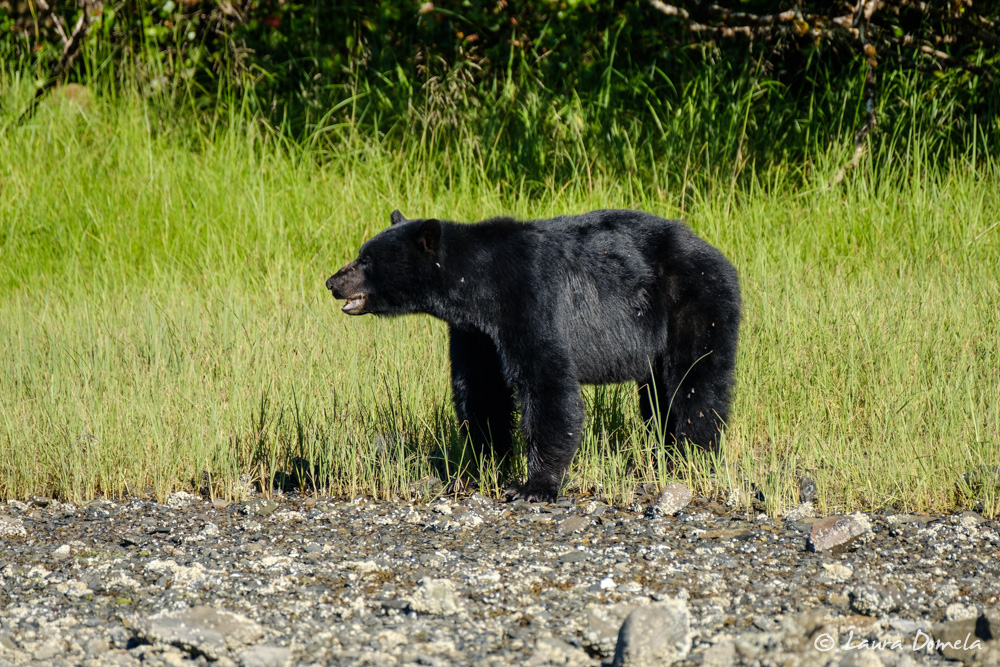
Sam flew the drone and found a cranium-shaped pool on shore.
Kevin caught a Coho (from the dinghy!) in American Bay, so fresh salmon tacos for dinner!
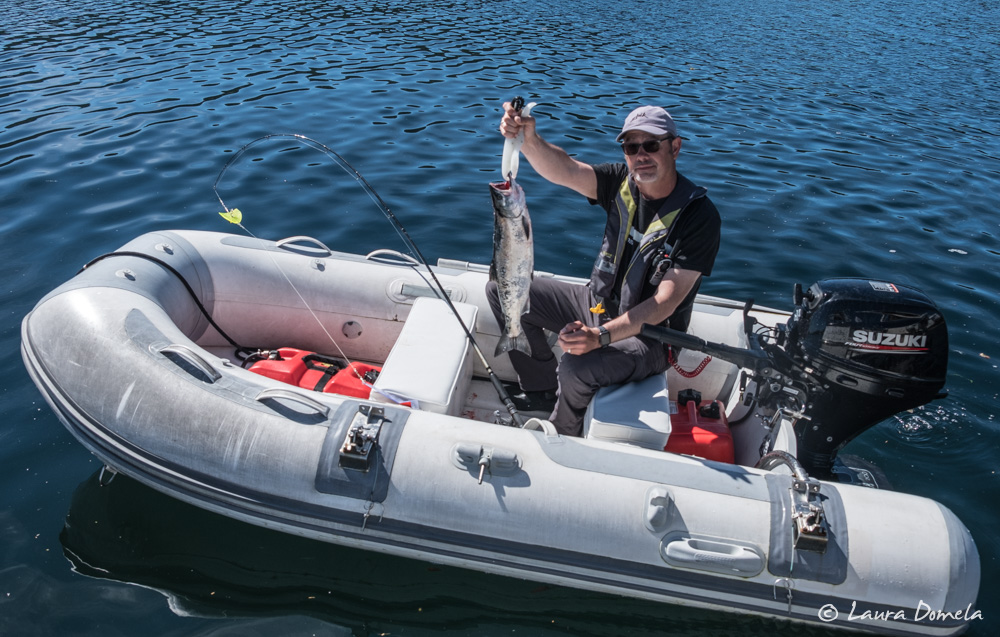
Tomorrow we head back into Craig, then Klawock.

